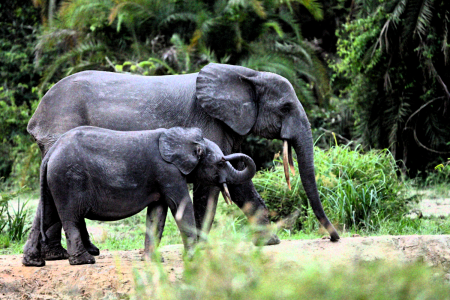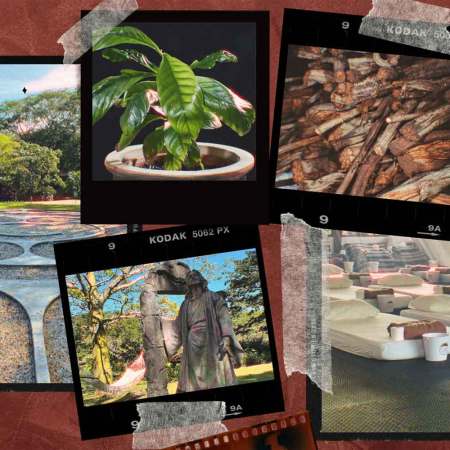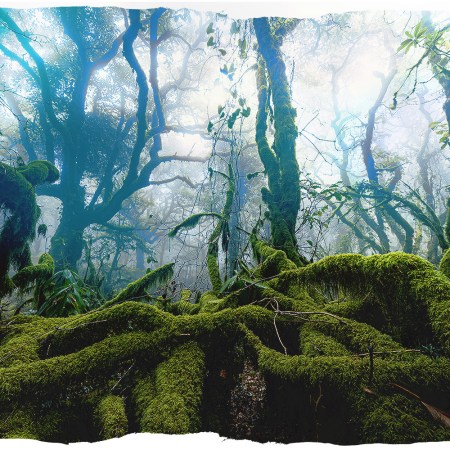
I’ve been a diver for nearly 20 years. From spearfishing in kelp forests teeming with life off the California coast to hosting Shark Week shows in atoll passes known for their toothy predators in remote French Polynesia, I’ve had no shortage of breathtaking moments under the sea. But last year when I found myself on Australia’s Great Barrier Reef, I cried. Not because I was sad, but because the beauty around me was overwhelming. It was everything I had ever imagined and more: a dazzling cornucopia of colors and creatures that could inspire a thousand Disney movies. A school of fish breaking into song and dance wouldn’t have seemed out of place.
Yet, this part of the world invites you to be cautious as well. Upon arrival to this sunburned country, after a 13-hour red eye from Los Angeles, I opened my eyes as my Qantas flight touched down in Sydney to the smile of a friendly Aussie who inquired where I was headed.
“Far North Queensland,” I told him.
“Ah!” he exclaimed. “Make sure you don’t get in any water other than a pool or the crocs might get ya.”
In most places I’d brush off a comment like that as a local having some fun with a tourist. But in Australia? It’s simply good advice. Even a Disney movie has its villains.
Far North Queensland is a mythical place, both for its natural geography and the human stewardship of it. The main cities of Cairns and Port Douglas are sandwiched between two UNESCO World Heritage sites, the Great Barrier Reef and the Daintree Rainforest. It’s the only place on earth where two such renowned protected areas intersect. The towns themselves are disarmingly informal and vibrant, and exude an environmentally-conscious ethos, which extends to the ubiquitous eco-resorts and proliferation of outfitters ready to take you into the heart of what makes this region spectacular. Flying foxes, those huge bats that look like winged puppies, make their way from palm tree to palm tree at sunset. A never-ending warm breeze keeps the humidity in check.
But the moment the beauty hypnotizes you into a relaxed complacency, the land reminds you who is in charge.
On my first night in Port Douglas, I walked past the historic St. Mary’s by the Sea church, rebuilt after the 1911 cyclone that leveled the entire town. I followed the last rays of sun to the edge of the water and sat on a bench watching boats enter the harbor at sunset, lulled by the sounds of birds roosting for the night. At my feet was a plaque honoring a spear fisherman who had seemingly been lost to the sea. As a freediver myself, my interest was piqued and I searched the internet for his name. On a bench in paradise I read the story of 18-year-old Daniel Smith who in 2014 lost his life to a shark attack almost 10 years to the day another local man, Mark Thompson, had died in a similar incident. It’s likely that both of them watched a sunset or two in this very spot.
“May the waters always be clear and the fish in abundance,” the panel read. “Forever in the blue.” I sat a while longer, honoring their memories. This place is certainly wild. But it’s this very wildness that drew me.



Among the Great Barrier Reef
To an ocean conservationist and travel journalist, the Great Barrier Reef is the holy grail of diving. On my second day in Queensland, still jet-lagged, I slipped under the water, breaking the barrier between the air-breathing world and the depths. Any travel weariness instantly dissolved and my senses sharpened to take in what seemed like endless biodiversity and abundance. The reef is the largest living structure on earth, roughly the size of Japan, and can be seen from space. Yet, here I was, a small speck on one of the thousands of individual reefs that collectively make up the whole. That realization is what made me cry. Tears poured into my dive mask, poetically adding salt to salt.
The Great Barrier Reef contains over 50,000 marine species, and I, a terrestrial-dwelling human, floated amongst them. There was the curious Maori wrasse, a humpheaded fish that can weigh up to 400 pounds. Massive stingrays burying themselves in the sand. Clownfish darting about their sea anemone homes. Whitetip reef sharks, schools of colorful fish and vibrantly decorated giant clams. Their backdrop was 600 species of both soft and hard coral of various shapes, sizes and colors, from sea fans waving their intricate designs in the current to massive table corals forming overlapping platters under which butterfly fish took shelter.
This part of Queensland feels ancient and untouched, like a well-kept secret, available to those willing to seek it and navigate its dangers. A treasure trove guarded by obstacles like an Indiana Jones adventure.
A lot has been said about the health of the Great Barrier Reef over the past three decades, headlined by bleak accounts of bleached coral and a dire prognosis of how long we have to enjoy this wonder. A ticking clock seems to loom over paradise. But the reality is more nuanced.
Although it is called the world’s largest coral reef, it is actually a collection of 2,900 individual reef systems. Spanning 135,000 square miles and varying in depth from 35 to 2,000 meters, the network encompasses a staggering amount of territory and biological diversity. Additionally, corals are animals, not plants, and their proclivities toward specific conditions can be finicky. Currently, the biggest threats to the reef are climate change, and warming water temperatures, which fuel the intensity of events like cyclones that damage the structure of the reef; unbalanced predators, like crown-of-thorns starfish that devour coral; water quality; and increasing coastal development. Although many areas are dealing with dire threats, others are thriving.
Fortunately, the impacted portions of the reef have a helping hand thanks to the people actively working to restore coral populations with innovative gardening practices. I had the opportunity to join one such group — scientists from GBR Biology, the largest team of marine biologists and First Nations cultural guides on the reef — to help build coral gardens.


The technique involves finding pieces of broken coral that are still alive, then identifying the species and attaching the fragments with zip ties to what’s called a Mars Assisted Reef Restoration System (MARRS). The apparatus consists of hexagonal steel structures, known as “reef stars,” that provide a platform for the coral fragments to grow. These stars are then placed side by side in what essentially becomes a massive coral regrowth garden. The system works so well that two-year-old structures I witnessed were thriving and creating rich habitats for marine inhabitants.
MARRS is such a success that it’s been implemented in sites ranging from Indonesia to Mexico as part of a larger initiative called the Mars Coral Reef Restoration. If you want a reason to feel good about your guilty pleasure Snickers bar, this is it, because it is indeed the Mars candy bar company that’s behind this specific endeavor.
Recently, the tourism marketing arm of Far North Queensland teamed up with Expedia for the Guardian of the Reef initiative, encouraging reef-positive travel and education by offering discounts in exchange for time spent gaining knowledge. The more you learn about the reef by watching short videos and reading articles, the more discounts you unlock. If you want to practice your coral-gardening green thumb, like I did, the opportunity awaits.

The Symbiosis of Tourism and Conservation
Reef conservation here is a true team effort. Queensland ecotourism providers bring travelers to snorkel the reefs aboard vessels that double as floating laboratories. Scientists work alongside vacationers allowing everyone to witness, and even participate in the work being done and learn about the process of reef restoration. First Nations representatives teach about ancient knowledge and practices. Since tourism operators are some of the most frequent visitors to the reef, they are the frontline of defense and education.
There are over 70 First Nations groups who have made their homes around the Great Barrier Reef for thousands of years. Their connection to “Sea Country” runs deep, and they have combined efforts with the Australian government, the Reef Authority and local outfitters to develop a multifaceted management system that works to protect and restore the reef. The love is mutual. The GBR contributes $6.4 billion to the economy yearly and supports around 64,000 full-time jobs.
Searching for Endangered Forest Elephants in the Republic of Congo
Odzala-Kokoua National Park is Africa’s oldest national park and an extremely important habitat for hundreds of species.Ironically, while social media and overzealous adventurers are wreaking havoc on fragile habitats around the world, tourism has become one of the reef’s biggest allies. By introducing people to the wonders of this extraordinary ecosystem, an immense amount of resources have been allocated to reef protection. (The Queensland government has committed more than $1 billion to reef protection since 2015.)
It’s easy to understand how someone who visits the reef becomes a fan for life. Not only does the habitat’s inherent magnetism draw you in like a beacon, but the experience of First Nations guides sharing ancient knowledge connects you to this ecosystem in a way that personalizes it to your own well-being.
My guide, Reggie Morey, introduced me to the natural sunscreen slime produced by corals which shields them from UV light. Her ancestors fished reefs at low tide to utilize this sunscreen to protect their own skin. Today, cosmetics companies are attempting to mimic these organic properties to mass produce non-toxic sunscreen for human use. Just one of the many reasons the reef deserves our attention.


Out of the Water, Into the the Rainforest
While the GBR is a global symbol of nature at its finest, the Daintree Rainforest flies under the radar, overshadowed by its famous neighbor. But this ancient jungle, considered to be the oldest on the planet — full of legends and lore as well as realities that are just as spectacular — is not one ounce less marvelous than its coastal companion. At 180 million years old, Daintree predates the Amazon by 10 million years. It’s full of rare species and prehistoric plant life, some found nowhere else on earth.
The Kuku Yalanji people call this area “Country.” Instead of taking ownership of the land their ancestors have called home for 50,000 years, as one of the oldest continuous cultures on the planet, they believe it belongs to everyone. The generational wisdom passed down about the flora and fauna is profound, all built around a deep respect for nature and an intimate knowledge of all her offerings.
It’s easy to understand how someone who visits the reef becomes a fan for life. Not only does the habitat’s inherent magnetism draw you in like a beacon, but the experience of First Nations guides sharing ancient knowledge connects you to this ecosystem in a way that personalizes it to your own well-being.
Our Indigenous guides instructed us on cultural symbolism. On how to paint our faces with the various colors of clay. They showed us leaves and berries and fruits, some that heal and some that kill. They taught us about their ancestors and spirits that live in the rivers, wind and trees. We watched birds and understood the meaning of their presence and how they contribute to the ecosystem. Crucially, we learned about gympie-gympie, otherwise known as “devil’s toilet paper,” and how important it was to avoid this rather vicious little plant that can inflict severe pain for days, weeks or even years.


The landscape of rich jungle, crisscrossed by sand-bottom springs bubbling up through ferns and towering trees, makes it feel like the ideal backdrop for a Hollywood blockbuster. It’s no wonder James Cameron’s inspiration for Avatar came from this very rainforest. We walked up stream beds, carrying red inflatable rafts, occasionally swimming and marveling at the play of light falling through the canopy. Like a flotilla, we drifted in silence, listening to bird calls and the wind. At an open bend in the stream, shaded by some of the biggest trees on our journey in an area called “The Cathedral,” our guides asked us to sit in silence for five minutes and connect with the forest. I took a seat in the river, looked up at the canopy and found myself crying again, this time to the rhythm of bird song.
Australia is a continent of breathtakingly diverse habitats. All these niche environments, the geographic isolation and subsequent unique evolution have given Australia’s creatures a sparkly patina of fatal-attraction fairy dust. From marine stingers, sharks and crocodiles to spiders, the world’s most dangerous bird and plants that make you think twice about stepping off any trail, this land certainly has its stewards. On more than one occasion I wandered a beautiful beach gazing longingly at the seemingly inviting waters knowing they could bring me face to face with the nearly invisible Irukandji jellyfish that causes paralyzing pain. When speaking to Australians about how they have managed to survive to adulthood, they point out that at least they don’t have bears or lions to contend with.
Despite the global fame of the Great Barrier Reef, and the growing popularity of the Daintree, this part of Queensland feels ancient and untouched, like a well-kept secret, available to those willing to seek it and navigate its dangers. A treasure trove guarded by obstacles like an Indiana Jones adventure.
With so much support from grassroots initiatives and government aid alike, one can only hope these global treasures will inspire happy tears for generations to come.





